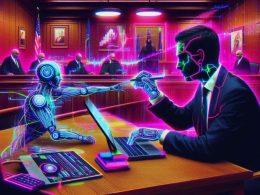We are now at the age of advanced AI assistants. This unique software significantly simplifies our everyday tasks, providing us with time to focus on the most important aspects of life.
This article will help you explore the history of AI’s evolution from the first chatbot to smart virtual assistants capable of making their own decisions. We’ll also share information about the future of the AI industry.
First AI Assistants
Software developers started working on the first virtual assistants in the late 1960s. These chatbots laid the background for future innovations and industry development.
ELIZA
In 1966, Joseph Weizenbaum developed the prototype of a virtual assistant. His chatbot was able to simulate a conversation with a real psychotherapist. Although the AI’s answers often didn’t sound natural, it was the first step toward developing digital companions.
PARRY
PARRY is another chatbot constructed in 1972. Unlike ELIZA, this AI was simulating a person who has paranoid schizophrenia. At the same time, it could understand the majority of user’s requests and provide corresponding answers.
Improved Digital Assistants
A new stage of AI’s development started with the release of the first personal digital assistants (PDAs). In the 1990s, many companies introduced compact devices such as Palm Pilot and Apple Newton. Although these companions couldn’t recognize the owner’s voice, they provided the possibility to manage information more efficiently.
Together with PDAs, IT experts worked on constructing and improving interactive voice response systems (IVRs). This innovation played a crucial part in the automation of customer service. It finally allowed companies to use computers to interact with their clients.
Software developers used the advantages of both PDA and IVR technologies while working on improved AI assistants. Later, these advanced digital companions became an integral part of all smartphones.
Siri
Apple introduced its virtual assistant in 2011. The release of Siri changed the AI industry and opened the age of new impressive developments. Unlike its ancestors, this digital companion could understand and respond to voice commands. Moreover, Siri could be used to write messages, set reminders, and look for helpful information on the Internet.
Google Now
After Apple’s invention, Google also launched its own assistant in 2012. Thanks to machine learning technology, Google Now could provide its users with personalized news, traffic reports, and weather forecasts.
Cortana
Finally, in 2014, Microsoft released Cortana. This AI assistant wasn’t as popular as Google and Apple’s products, but it could still understand voice commands and execute them.
Development of Voice Assistants
The rapid evolution of portable gadgets and smart AI companions inspired companies to develop special voice assistants. Most gadgets, such as speakers and laptops, were designed with them. This innovation significantly contributed to the evolution of artificial intelligence and the popularization of smart homes.
Amazon Alexa
Alexa became a virtual assistant developed for Amazon Echo in 2014. This companion could read news, turn on music on the connected devices, and manage smart home appliances.
Google Assistant
In 2016, Google replaced Google Now with an improved Google Assistant. This companion was implemented in Google Home smart speakers. This assistant had similar features to Amazon Alexa. At the same time, it could answer different questions, look for recipes, and set timers.
Modern World of AI Assistants
The massive popularization of AI assistants began with OpenAI’s GPT-3 release in 2020. The digital companion can generate human-like messages and discuss almost all topics. Additionally, GPT-3 can generate simple lines of code, articles, video plots, etc.
OpenAI has already developed GPT-4, which is even more intelligent than its predecessor. The upgraded AI assistant can also work with images and generate visual content.
The impressive popularity of OpenAI’s product resulted in the rapid development of other digital companions. ChatGPT’s main competitors are Microsoft’s Bing, Google’s Bard, and Baidu’s Ernie. However, dozens of other projects also aim to build powerful AI assistants.
Bright Future of Digital Companions
Many businesses use artificial intelligence software development services to implement AI companions in their online products. These assistants can significantly boost user experience by providing services that consider each client’s interests and preferences.
In addition, AI software is often used to develop smart voice-activated systems to deal with customer inquiries. Modern businesses use them as a cost-efficient substitute for traditional call centers.
Considering all the benefits of virtual assistants, the further development of this technology looks promising. It’s expected that 80% of businesses will adopt intelligent automation by 2025. Thus, we should expect to see smarter and more advanced AI companions in the near future.
Conclusion
Virtual assistants evolved from simple chatbots to advanced digital companions. Now, they can provide more natural and useful answers due to the possibility of understanding our emotions and slang, and the development of new technologies and the growing popularity of AI software will undoubtedly lead to the release of even smarter digital companions.









